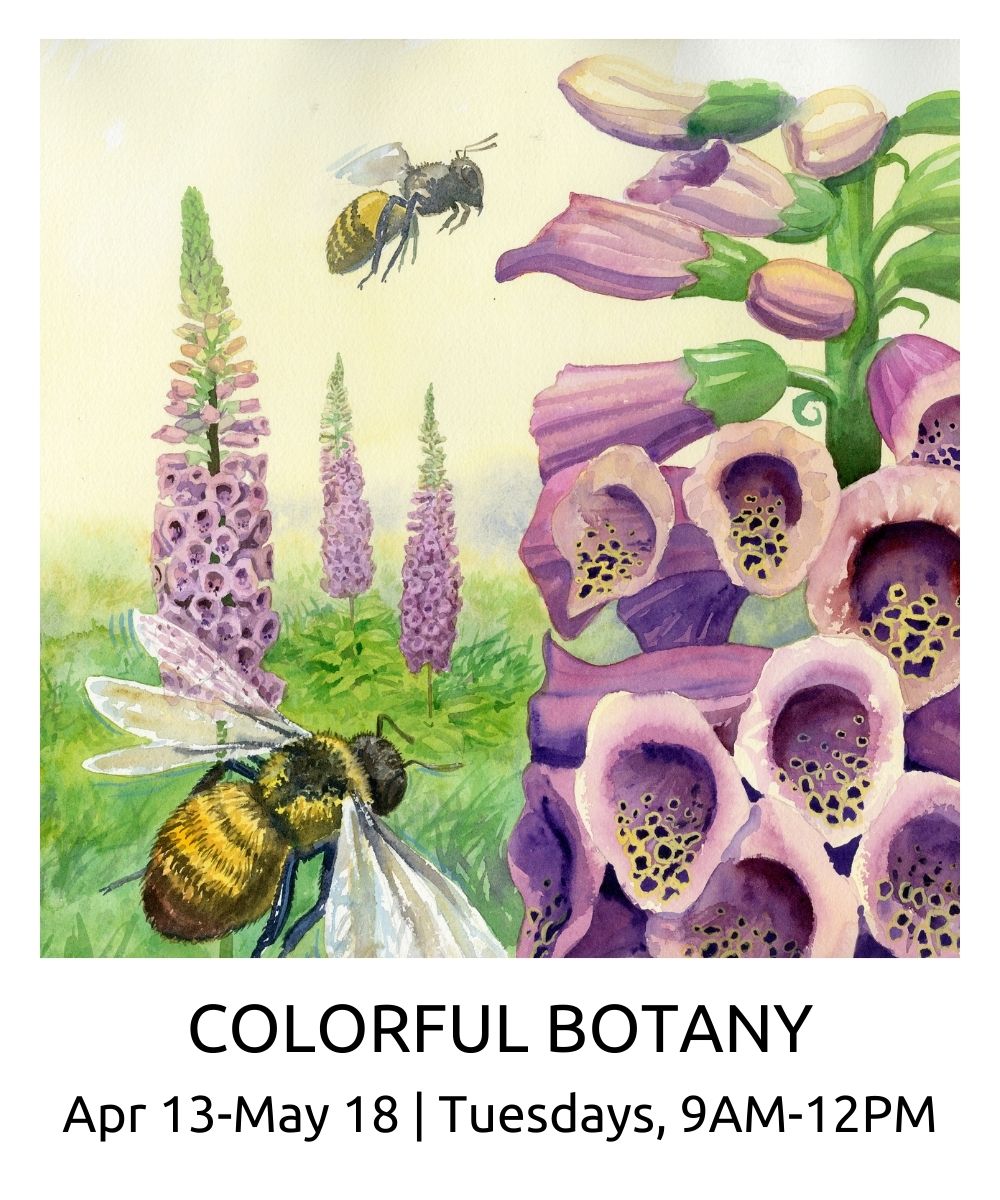Online class | Colorful Botany in Watercolor
At the end of this cold and snowy winter we are all craving for colors and verdant nature. This watercolor course that focuses on colorful flowers and luscious plants might just be what you need!
The incredible variety of hues offered by flowers will also give us occasion to practice color mixing and color theory as we paint them individually or in a variety of compositions.
The structural characteristics of flowers and plants are quite amazing and studying them will give us access to their inherent aesthetics. These and many more fascinating aspects of flowers will be discussed during these six three-hour online classes.
The Zoom sessions will be recorded and the students will be able to view them for a period of about three months so they will be able to review the lesson, keep practicing and improving their skills at painting flowers and watercolor in general.
The incredible variety of hues offered by flowers will also give us occasion to practice color mixing and color theory as we paint them individually or in a variety of compositions.
The structural characteristics of flowers and plants are quite amazing and studying them will give us access to their inherent aesthetics. These and many more fascinating aspects of flowers will be discussed during these six three-hour online classes.
The Zoom sessions will be recorded and the students will be able to view them for a period of about three months so they will be able to review the lesson, keep practicing and improving their skills at painting flowers and watercolor in general.
Materials
Paint: Watercolor paint in tubes or pans. You can use any watercolor paint you have, but these are the recommended colors: yellow lemon or cadmium yellow light-pale, cadmium yellow medium, cadmium red medium, alizarine chrimson, cobalt blue or cerulean blue, ultramarine blue, yellow ochre, raw sienna, burnt sienna, black. Blue gray by Old Holland or Lavender by Holbein can also be very useful colors to create sense of atmospheric distance or a gray-cloudy sky.
Brushes: #2, #8 and #14 round synthetic brushes, these brushes are cheap and versatile. If you can afford a Kolinsky sable brush you should buy a #8 round. The best brand is Winsor and Newton but it is very expensive. Raphael or Eskoda make very good quality Kolinsky sable brushes for much less. You also will need a 1” ½ or 2” flat synthetic or natural hair brush for washes.
Paper: a pad of 11”by 14” cold press watercolor paper by Arches, Fabriano or Winsor and Newton. You can also use any paper you like or you already have such as hot press, rag or hand made.
Other: Finally, you will need a mixing palette, water containers, pencils, kneaded erasers, and paper towels.

